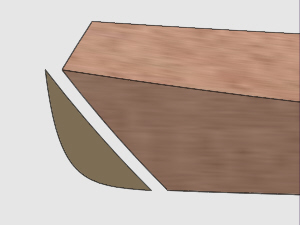Criteria; flat bottom, pirogue or narrow beateau type boats, flat water, paddling, large capacity
In simple, baby, new-be, amateur, for dummies, new to, and patient language please help with these:
1. What would be the widest beam width practical, at the paddlers location?
2. Seat height vs. side height.
3. How wide could the bottom be with tumblehome sides?
4. Rocker vs. no rocker
5. Short/wide boat vs. longer/narrow boat for increased capacity
beekeeper
In simple, baby, new-be, amateur, for dummies, new to, and patient language please help with these:
1. What would be the widest beam width practical, at the paddlers location?
2. Seat height vs. side height.
3. How wide could the bottom be with tumblehome sides?
4. Rocker vs. no rocker
5. Short/wide boat vs. longer/narrow boat for increased capacity
beekeeper




